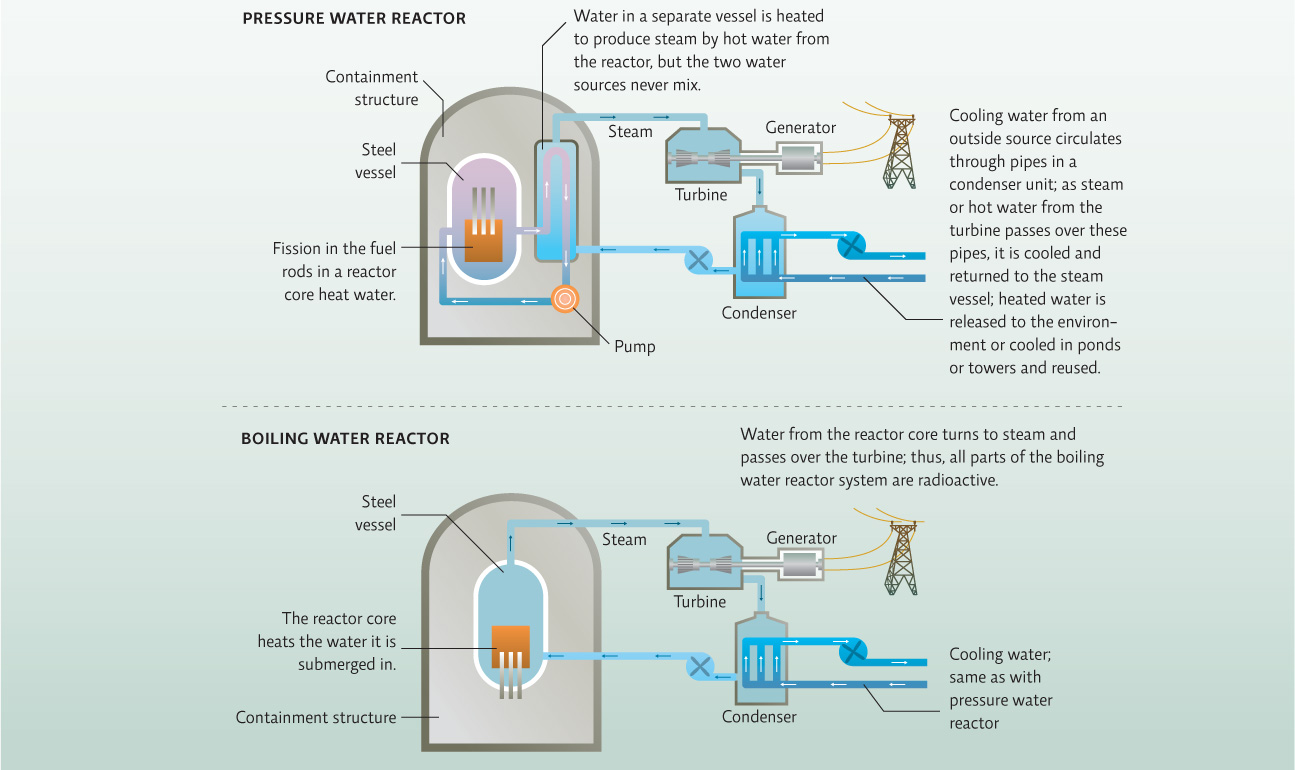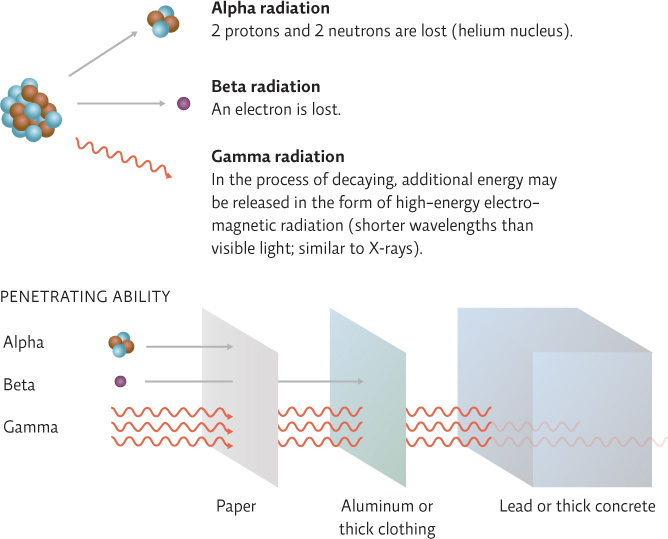Nuclear accidents can be devastating.
On the day of the quake, each of the three operating reactors at the Fukushima plant held about 25,000 fuel rods, each rod about 4 meters (12 feet) long and filled with pellets of enriched uranium. The power outage had not only plunged the plant into darkness but also stopped the normal delivery of water to those reactors.
As the world watched, workers at the plant tried everything they could think of to get cold water on the hot fuel. They tried to bring in fire trucks and emergency power vehicles, but the quake and tsunami had rendered the roads impassable. In one desperate attempt, some workers even searched the parking lot for vehicles that might have survived the tsunami with their batteries intact. But it was all to no avail.
Not only were the rods in danger of melting and of producing hydrogen gas, but without a steady supply of coolant, they were rapidly boiling away all the existing water, thereby creating huge steam pressure in the reactor. To prevent an explosion, the steam would have to be released through a vent. But the design of the Fukushima reactors made this an especially tricky feat.

There are several different types of fission reactors. The most common type worldwide is a pressurized water reactor (PWR), where the steam that turns the turbine is not exposed to radiation: Nuclear fission in the core heats water under pressure (like a pressure cooker); that radioactive water enters a pipe that passes through, and thus heats, a separate container of water (which is not exposed to radiation); it is the steam from this radiation-free water that turns the turbine. The reactors at Fukushima, however, were boiling water reactors (BWRs); BWRs produce steam in the reactor core itself. This means that both the steam and the turbine become radioactive in the process. INFOGRAPHIC 22.5
The most common type of nuclear power plant is a pressurized water reactor (PWR); 265 of them are in operation around the world. The reactor at Fukushima is a boiling water reactor (BWR), one of 94 in the world. Both designs use fuel assemblies with control rods and use water as a cooling and steam source. Temperatures are kept “down” to about 1,400°C, well below the melting temperature of the uranium fuel (2,800 °C) and the metal casing of the fuel rods (2,200°C). If the reaction is not kept cool with circulating water, a meltdown can occur. Even if “shut down” by inserting all the control rods to absorb the neutrons and stop the chain reaction, heat will still be produced by the natural decay of the isotopes (they are not being split by bombardment; they are simply spontaneously losing particles).


How is a nuclear reactor similar to a coal-fired power plant? How are they different?
They both heat water to create steam that turns a turbine connected to a generator. Both also use water for cooling. They differ in that nuclear reactors produce hazardous radioactive waste that must be stored whereas coal power plants produce air pollution that is released or captured. [Burning coal does release a small amount of uranium.] Nuclear power plants use much more water (for cooling) than coal power plants.
It also meant that opening the vent at the Fukushima reactor would be akin to pumping radiation straight into the air. Still, not opening it would almost certainly be worse: If any one of the reactors exploded, it would release much, much more radiation than the steam from the vent. “It was this horrible double-edged sword,” says von Hippel. “Exactly the kind of situation that we always feared with the BWRs—a lose—lose.”
KEY CONCEPT 22.6
Alpha, beta, and gamma radiation vary in their ability to penetrate substances; while all are dangerous, gamma radiation is the most hazardous to health.
On the morning of March 12 (day 2 of the disaster), six workers gathered in the plant’s main control room, where each of them swallowed several iodine pills; by loading their thyroid glands with iodine beforehand, they hoped to prevent their bodies from absorbing radioactive iodine from the steam that would pour out of the vent. They donned thick, heavy firefighter uniforms, along with oxygen tanks and masks, in an effort to shield themselves from alpha and beta radiation. Both alpha and beta radiation come from particles. (Alpha particles are basically a helium nucleus; beta particles are essentially electrons.) Neither type can penetrate the skin very well. But if they enter the body through ingestion, both kinds can linger for years, causing organ damage and cancer.
None of the equipment would protect the workers from gamma radiation, which is much more energetic than alpha or beta particles and can easily penetrate walls, skin, and other surfaces. The only way for workers to avoid overexposure to gamma rays would be to get in and out as quickly as possible. Dosimeters—mini radiation detectors attached to each fire suit—would let them know, with loud, alarmlike beeps, when they had exceeded the legal limits of exposure. INFOGRAPHIC 22.6
The different types of radiation have differing abilities to penetrate surfaces. Alpha particles don’t travel far and can’t even penetrate paper; they do not penetrate skin but can be harmful if inhaled or ingested in food or water. The much smaller beta particles can penetrate the upper layers of the skin but are easily stopped by a thin sheet of aluminum or very heavy clothing. High-energy gamma rays can penetrate the deepest but can be stopped by thick or very dense material such as 20 centimeters (8 inches) of concrete or 2.5 centimeters (1 inch) of lead. Exposure to radiation, especially gamma rays, can damage a wide variety of body organs, leading to radiation sickness; it can also cause mutations that lead to cancer or cause birth defects.


Why were the people of Fukushima Prefecture concerned about the alpha radiation released with the reactor meltdown? After all, it cannot even penetrate paper!
The worry revolved around the problem of consuming food contaminated with alpha radiation, such as milk from cows who grazed on contaminated fields.
As the Sun climbed high over the ravaged coastline, the team of six headed into the first reactor to search in darkness for the vent. The plan was to work in teams of two and to relay their efforts so that no one worker was left hovering over the vent for too long. It took the first team 11 minutes to find the manual gate valve, crank it open a quarter of the way, and retreat. With the vent open partway, the radiation levels climbed so fast that the second team could not even reach it; in just 6 minutes, one of them absorbed a dose of radiation that surpassed the maximum limit allowed for 5 years. The third team did not even try.
That afternoon, the building housing reactor number 1 exploded, sending concrete and steel debris flying through the air and setting off a chaotic, and seemingly irreversible, chain of events: Radiation levels around the plant climbed exponentially, deterring efforts to vent the other two reactors. In the days that followed, both exploded.